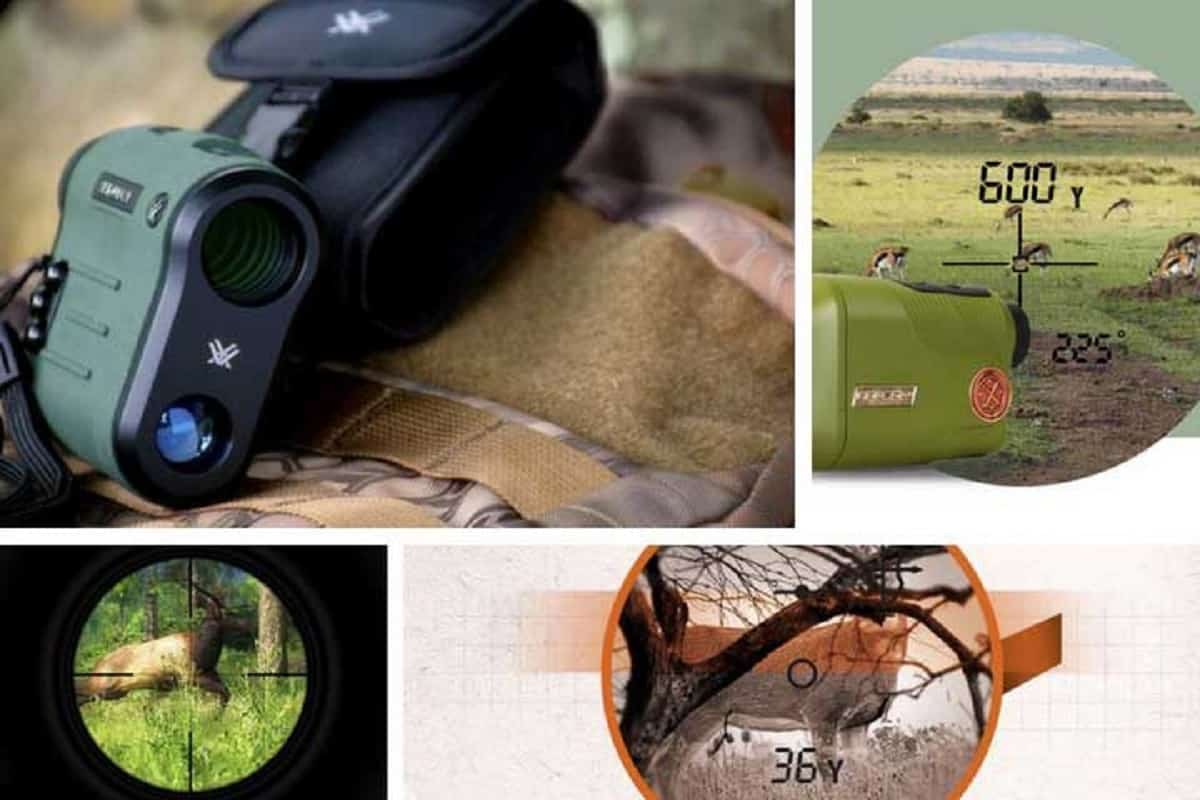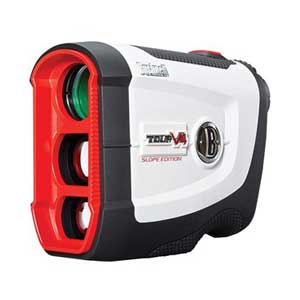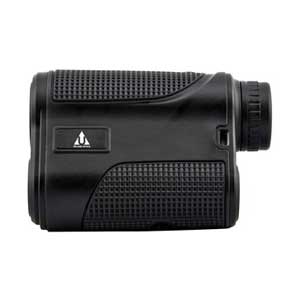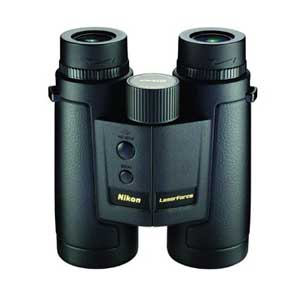Finding a rangefinder for long-distance shooting can be a tough task, especially if you’re not sure where to start. The first thing to consider is what you need a rangefinder for, and how proficient you are with different types of guns you can use one on.
Shooting long-range can be tough, as sometimes it can be difficult to know exactly how far away your target is. We are here to help – we’ll introduce you to some of the best gun rangefinders on the market today and let you decide which one of these excellent products works best for you and you alone.
1. Sig Sauer SOK10001 Kilo 1000 – Our Pick
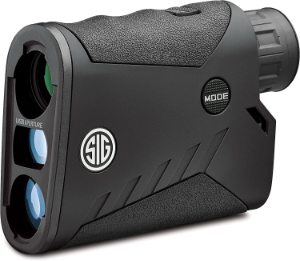
1. BDX (Ballistic Data Exchange)
2. Auto Illuminated Holdover Dot
3. Four Range Updates per Second
4. Powerful Battery
Not to be blunt, but in my opinion, the Kilo 1000 rangefinder is the best on the market. When Sig Sauer created this unit, they didn’t have it designed for their BDX technology; however, even then, it was still the top rangefinder on the market.
By adding BDX (ballistic data exchange), they made an already exceptional unit even better by adding an automated illuminated holdover dot via Bluetooth and an app. But that’s not all, because before they added BDX, 1000 was more expensive than their new unit. So in a sense, they took an old product, cut down the price, and made it even better. How cool is that?
Its specs aren’t anything to scoff at, too. It has four range updates per second in scan mode. An angle-modified range for tree stand hunters automatically calibrates brightness for changing light conditions and even a lifetime warranty, which is always a welcomed addition. With a range of up to 3400 reflective, 1400 Deer, and 1800 Trees, a common and powerful battery like the CR2, and as little weight as possible while remaining a durable and rigid product, this is truly a high-end model.
With an Infinite warranty and so many features that you won’t find on many other models, the hefty price of the unit is somewhat understandable, and if you want the best, choosing the 2200BDX is the way to go.
On the other hand, the unit can be placed in Scan mode by simply pressing and holding the button as the unit is swept across the field of view to provide multiple distance measurements and several targets.
And last but not least, it features a Ballistic Information System that uses an internal ballistics table for given calibers and bullet weights at given muzzle velocities combined with the current distance measurement to provide accurate hold over distance measurements for your gun.
Overall, suppose you can get over the high price and European origin. In that case, this rangefinder from Zeiss has some of the best rangefinder technology and an excellent build and quality brand name behind it.
2. Vortex Optics Ranger Laser Rangefinder
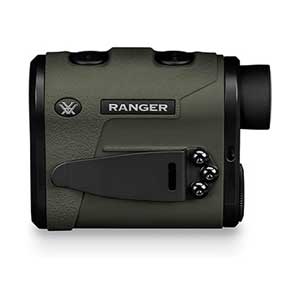
1. Targets Out to 1800 Yards
2. Built-In Angle Compensation
3. Line of Sight (LOS)
4. Lifetime Warranty
Vortex is an excellent American company that is a favorite to many hunters, not only because they are a quality piece of equipment but also because they offer amazing customer service if something breaks, you just send it back, and they will replace it. This is something rare nowadays, so take note of it.
The industry-leading lifetime warranty isn’t the only trick up its sleeve, though, not even close. It has range deer out to 900 yards, targets out to 1800 yards, a built-in angle compensation designed for tree stand hunters, a Line of Sight (LOS) mode that displays the actual line of sight distance, and the huge bonus of being fully waterproof.
The rangefinder is very accurate, +/- 3 yards @ 1000 yards even when they are magnified at max, which is 6x times, and if you have used a rangefinder before, you know that that is a lot. The lens is pretty big, 22mm, to be exact, which allows a lot of light to pass through, and thus it will give you a much clearer image.
The rangefinder uses standard CR2 batteries, and with its easy interface and low weight, this is a comfortable piece of gear. Overall, if you want an American-made, tough, and feature-rich rangefinder, you have found it here.
3. Bushnell Tour V4 Shift
1. Golfing Special
2. Dedicated Hole Scan
3. JOLT Technology Pin Seeker
4. Made in The USA
This here is our first Bushnell rangefinder, and if you haven’t heard of them, they are one of the best brands for rangefinders from the USA, with their excellent customer support and affordable range of products, from budget to high-end.
This exact model is focused more on golfing, with special features like a dedicated hole scan and more magnification, so if you go out with your friends at the weekend to make some rounds on the golf course, you have an excellent contender.
It is also very feature-rich, with a slope Switch Technology and pin seeker with JOLT technology; it is accurate to +/- 1 yard, and it ranges from 1000 yards and 400+ yards to a flag. The 5x magnification, the fast focus system, and the class 1 laser with low power output wrap all the additional features into a nice package that makes the Tour V4 an excellent golf rangefinder for both newbies and enthusiasts alike.
4. UPLAND OPTICS Perception 1000
This rangefinder from uplands optics, as you may have gotten by its name, has a pretty good range of 1000 yards, which for its class and its price, makes it a pretty good contender to even higher-end models. The Perception 1000 is a near-perfect lightweight and affordable laser rangefinder perfect for either the bowhunter or rifle hunter in the family. This alone allows it to compete with some of the big wigs like Nikon and Leica.
With a range of up to 1000 yards and accuracy of up to 1 yard, the Perception 1000 allows you to take ethical shots with accurate updates on the fly in a lightweight package, not to mention its good looks and the 6x magnification.
Its waterproof rubber armor case, combined with the textured exterior, gives it an amazing grip and outstanding durability. This offering from Upland Optics bridges the already small gap between rifles and bows inexpensively and excellently, which makes it a must for every budget hunter out there.
5. Nikon LASERFORCE Binocular
This here is familiar and, simultaneously, foreign because it looks like a normal pair of binoculars. Still, it’s a magnificent combination made from Nikon, and the results are as astonishing as you may expect. You get a good range, approximately 1900 yards, and the best thing, the tree, and deer ranges are also very close, with 1400 and 1100, respectively.
One of its most outstanding features is its OLED display, characteristic of most Nikon models. Very bright and clear, the display has a 4-step intensity adjustment so you can read it easily under any lighting conditions and against various subjects, with single or continuous measurements for up to 8 seconds.
Displays in increments of 0.1m/yd, when shorter than 100m/yds, and in 1m/yd at 100m/yds and over. And if you are the type of person who forgets to turn off their tech, the rangefinder has an auto turn-off feature after 8 seconds of no use.
Nikon’s advanced ID Technology provides the horizontal distance to the target, even when ranging at various incline or decline shooting angles—up to an incredible +/- 89 degrees (nearly vertical up or down).
The reflective mirror coating is applied on the mirror surface of the roof prism unit, providing bright images and protection against the elements. ED (Extra-low dispersion) Glass corrects chromatic aberration, giving images with nice contrast and true colors.
Rangefinders vs. Rangefinder Binoculars?
Contents
- 1 1. Sig Sauer SOK10001 Kilo 1000 – Our Pick
- 2 2. Vortex Optics Ranger Laser Rangefinder
- 3 3. Bushnell Tour V4 Shift
- 4 4. UPLAND OPTICS Perception 1000
- 5 5. Nikon LASERFORCE Binocular
- 6 Rangefinders vs. Rangefinder Binoculars?
- 7 What Makes A Good Rangefinder?
- 7.1 Type
- 7.2 Ruggedness
- 7.3 Target Priority
- 7.4 Viewing Distance
- 7.5 Power Source
- 7.6 Scan & Horizontal Modes
- 7.7 Reticle
- 7.8 Accessories
- 7.9 Warranty
- 7.10 Stop & Think!
- 7.11 Intended Use
- 7.12 Legality
- 7.13 Size
- 7.14 Weight
- 7.15 Battery Life
- 7.16 Special Features
- 7.17 Accuracy
- 7.18 Optical Quality
- 7.19 Angle Compensation
- 7.20 LCD vs. LED Displays
- 7.21 Budget
- 8 Leading Rangefinder Brands
- 9 Frequently Asked Questions
- 10 Final Words
While in this article, we will mainly focus on rangefinders, nowadays rangefinder binoculars have become more and more famous, with their combinations of standard binoculars and a rangefinder resulting in one less thing to carry. This, though, doesn’t make rangefinders, just the opposite. They are much lighter and smaller, so if you are going on a quick whitetail deer hunt, carrying as low weight as possible is a priority.
What Makes A Good Rangefinder?
Buying a rangefinder is not as difficult as it looks. With proper research and market study, you will find out which hunting rangefinder suits you the most. But if you do not put enough time into finding the right one, there is a great possibility of you ending up with a rangefinder, which is not ideal for you. So, make sure to take a look at the following points before you purchase a new hunting rangefinder.
Type
This is the main difference in determining what kind of rangefinder you will buy – is it an optical or a laser one?
The optical ones rely on manual magnification and a reticle to determine the distance. While they certainly have fewer features, they are much more rugged and durable, and the fact that they don’t require batteries makes them more reliable too.
On the other hand, we have a little bit heavier but much more technologically advanced laser optics that even the military uses. They are essentially small computers capable of calculating the distance using a laser, which at first may sound very high-tech, but it’s very simple.
Ruggedness
Like all pieces of gear that will be taken out in the field, you need something rugged and durable that will allow you to use it even in the harshest of weather, from rain to snow. Don’t get hung up on numbers and IP ratings, though; just look for a rangefinder that can take a beating and function perfectly.
Target Priority
Target priority on a laser rangefinder means it is calibrated or customizable to find either an aggregate or a simple measurement. To simplify, this means that you can choose for the unit to find the closest, farthest, or average distance that it is pointed at. This is a crucial feature during hunting and golfing because even if there is an obstacle in front of your target, you can calibrate the rangefinder so that it won’t interrupt the measurement.
There is both selectable and automatic target priority. Still, both will do an excellent job in denser areas that will challenge simpler laser ones and optic rangefinders. And even if it’s not the most important thing you will be looking for in your rangefinder, try to find a model that has it because you never know when you may need it.
Viewing Distance
While you may get a rangefinder with a range of 1000 yards and above, if it doesn’t have a magnification feature, it will be practically useless to you. Most models out there have a four or 6x magnification allowing you to get a close-up of your target without sacrificing viewing distance. At first, you may think this will probably be a feature you won’t use, but every hunter and golfer can tell you that zooming on a target is crucial to succeeding.
Power Source
The optical rangers have a huge advantage over the laser ones because they don’t need any sort of power source to operate, so no matter how long the hunt or the course is, you won’t be stopping to change batteries.
But if you do insist on using the additional features of a laser rangefinder, get yourself ready to buy a huge stock of batteries because you will need them. If you are in a rural area, try to buy a rangefinder that uses common batteries that won’t require you to buy expensive models from the internet.
There are models with rechargeable batteries, but they are better for golfing because then you will have a close source of energy. Still, for hunting, a rangefinder with changeable batteries and a pack of spare ones will be a better choice.

Scan & Horizontal Modes
These two features are used only in specific situations, and they aren’t a 100% must. If you need to collect a lot of data quickly about your surroundings, for example, if you’re boar hunting with a bow and waiting for a boar to come in, then having a quick scan will save you a lot of trouble.
The horizontal flip, though, is a very overrated feature, and if you are spending additional money on it, better stop now and use it on something else because, if I may be honest, it’s practically useless.
Reticle
Reticles are a lot like knives, and simpler is better. Most, if not all, rangefinders have an LCD that allows you to see the measurements and the reticle. This display is easily washed out with light, easy to fumble with during stress, and very easy to confuse if you aren’t practiced with it.
You need to get very familiar with your gear; otherwise, no matter how advanced the display is, it will be useless to you. Some rangefinders have a whole bunch of features that help you predict shots and have ballistic reticles familiar to rifle scopes, and while I can’t deny that, I love using them, in the long run, simple reticles are better.
Accessories
A rangefinder is not a very complicated tool, so there aren’t many accessories for it out there. Most of the time, the manufacturer will include a strap and a carrying case, and hardly ever a battery, but if you buy a product that has these extras, you know that the company cares about the consumer and puts real thought into what they do.
Warranty
Most reputable brands offer a multiyear or even a lifetime warranty, so stick to ones with a warranty. Otherwise, there is a huge chance that something fishy is going on, and the product is not what it says it is.
Stop & Think!
Before you go shopping, determine some boundaries of what you need because if you go over the top, you may end up with something that has a bunch of features that you aren’t going to use, and they will slow you down significantly. On the other hand, make a list with all must-need features and search thoroughly for what you need because there is a model for every enthusiast’s needs.
Intended Use
What you plan on using your rangefinder for is the biggest external factor that affects your purchase.
A laser rangefinder for golf has a different set of features and priorities than a unit made primarily for hunting. And while yes, the fact that they are essentially the same tool means that there will be a lot of crossovers between hunting and a golf rangefinder, each one will have specific features that will help you to accomplish your task a lot easier.
Hunting rangefinders are mostly camo or black, while a golf one will be a bright color that isn’t very well suited for stealth. The hunting rangefinder will also have special software for bullets and arrows that makes it much more accurate.
The golfing unit, on the other hand, combines a longer battery life with a lot more precise reticle and a farther magnification to cater to the needs of a professional golf player.
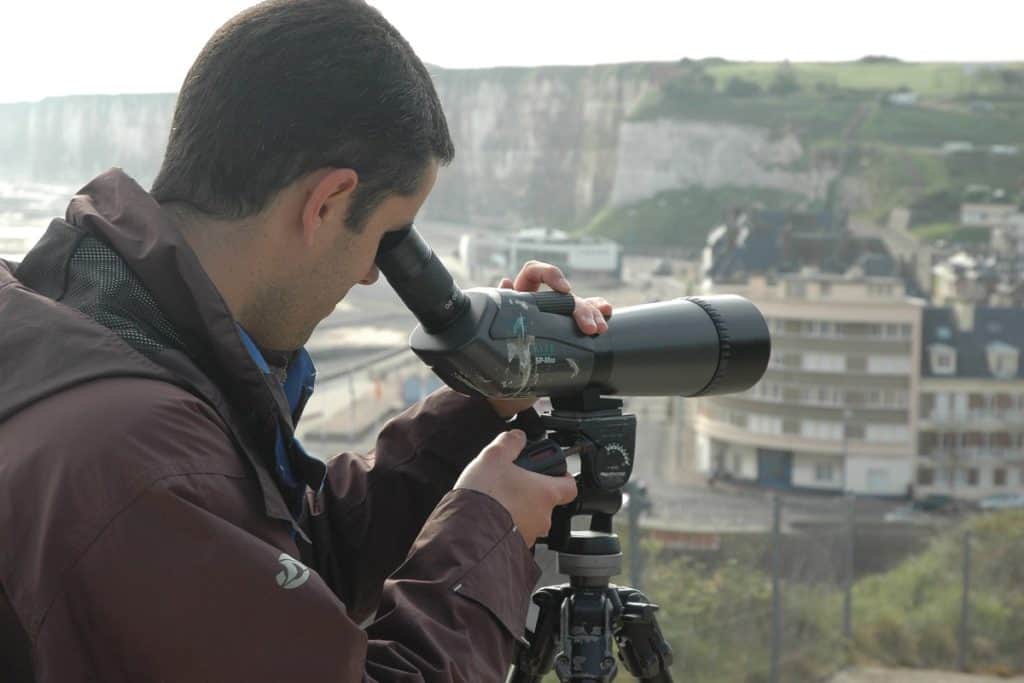
Legality
Most of the time, there aren’t many legal restrictions regarding rangefinders, but in some states hunting competitions and golf tournaments don’t allow them as they allow less-skilled contenders an unfair advantage. But if you use them on your terms, there won’t be any problems.
Size
The two things you need to consider when it comes to size is to make sure the unit is as small as possible, as to be carried easily and even be hung around your neck for quick access and be shaped well enough to be held comfortably without much effort.
Weight
The best balance when it comes to weight is to choose a model that cuts as much weight as possible because, after a long day of hunting, you will start to feel the rangefinder take its toll on you while still keeping all the features you need and a quality casing. Remember, cutting weight shouldn’t mean cutting corners.
Battery Life
Optical rangefinders don’t have to deal with this. Still, for laser ones, the battery life is one of if not the most important features, because even if you have the most powerful laptop in the universe, what good will it do to you if its battery is only 2 minutes?
- For golfing, especially, get a model that will last you the whole afternoon.
- If your rangefinder is a bit power-hungry, try using rechargeable batteries.
- You should always have a spare set of batteries.
Special Features
As we touched upon above, every rangefinder is specialized for a specific task, so you will find many different special features, like ballistic speed counters, hole markers, and so on. You shouldn’t overpay for features you won’t be using, though, so think very carefully about what exactly you need and how often you are going to use it.
Accuracy
Some sports require more accuracy than others. A golfer will appreciate a +/-1 yard, while a competitive shooter or long-range hunter will need a minimum of +/- .5 yards.
- Decide what you’re willing to settle for.
- Set a price range of what you’re willing to pay for.
- Get a unit that you can live with.
A better unit will correct a user error better, and even if you don’t fully utilize its performance, there isn’t such thing as too much accuracy.
Optical Quality
Like camera lenses, like binoculars and all-optical instruments, the quality of the glass makes a huge difference, no matter the situation. If high optical quality is important to you, and it should be, then look for brands known for outstanding lenses.
Nikon, Leupold, Leica, Bushnell, and Vortex are great starting places, and they have some of the best rangefinders in the world. Be careful, though, because while these brands offer the best glass, they also have a hefty price.
Angle Compensation
Тhіѕ іѕ а fеаturе thаt wіll trulу gіvе уоu ассurаtе mеаѕurеmеntѕ whеn уоu’rе іn unрrеdісtаblе оr ѕtеер tеrrаіn. Наvе уоu еvеr trіеd lаѕіng frоm а trее blіnd оnlу tо mіѕѕ your target by 30 yards. If this happened to you, it’s probably because your rangefinder lacked angle compensation.
Аnglе соmреnѕаtіоn іѕ hіghlу undеrrаtеd. Іt’ѕ аn аbѕоlutе muѕt іf уоu wаnt tо аvоіd іnјurіng а tаrgеt whеn kіllіng thеm іѕ thе gоаl, аnd іt соuld аlѕо mеаn а соmрlеtе mіѕѕ. Тhе truе hоrіzоntаl dіѕtаnсе аllоwѕ уоu tо knоw thе rіght dіѕtаnсе tо аіm fоr thаt grаvіtу wіll hаvе аn еffесt оvеr уоur ѕhоt.
LCD vs. LED Displays
At first glance, you may not give a lot of thought to this decision, but when the light of the afternoon sun shines directly on your optics, meaning you miss the deer that was only 200 yards away, you will start to regret your ignorance.
LCDs are great in a lot of light, with their clear black reticles and resistant to reflection screen, but when it comes to late at night or the early morning, nothing can beat the bright red glow of an LED display, which will be a much better choice no matter what.
So, the best thing to do is to narrow down your most common hunting hours and then choose the type of display that suits you the most. When it comes to LEDs, try to find a rangefinder with adjustable brightness, so it doesn’t destroy your vision during the blackest of nights.

Budget
This is a very hard topic regarding optics because this type of tech isn’t like most types of gear, and it isn’t getting what you pay for.
While there are deals that the more you spend, the better off you are, an inexpensive rangefinder can give you all the information you need for making an accurate shot at a distance but may lack refinements and quality of glass that will matter in the long run.
Don’t worry, though; after we look at some of the best brands that you can find on the market right now, we will look at the best bang for your buck rangefinders, so you won’t need to worry about the complicated pricing that the world of rangefinders offers.
Leading Rangefinder Brands
There are so many good brands putting out quality products now, and if you stick to a well-known company, it’s more likely a good buy.
There are lemons from everywhere, but for the most part, companies stick to their section of the market and serve a specific group of people and budget range.
Halo
Known for their strange and angular designs, Halo makes a good range of quality rangefinders that utilize decent optics for a good price.
- Very good beginner laser rangefinders. Though they lack a lot of luxuries and create comforts, they have a bare-bones and dead-reliable approach to building gear.
- They are easy to use since you won’t find many settings on these rangefinders.
- Their odd shapes make them easy to hold, even with gloves.
- Their smaller sizes make them comfortable to wear on a lanyard for quick hunting, in which they are the best, not so for golf.
For a beginner, you really can’t go wrong with Halo. They have reasonable prices and easy-to-use features, and they will be easy to learn. So if you are a young hunter or just getting started, consider them because it will make your journey much easier.
Bushnell
Bushnell is a huge company that makes dozens of different optics that serve every part of the market and budget spectrum. They are the most common brand found, and as such, they are reliable and honest with their customers.
- They make different models and play around with designs and features more than any other company. This has led their competitors to copy their lead and to come out with features very like theirs.
- They allow rangefinders to tell you if your shot is clear for an arrow or a bullet.
- They have rangefinders that can factor in elevation, the angle between you and your target, and predict the distance that your bullet or arrow travels and use that to tell you how far to aim or which pin to use.
They continue to make huge improvements with each iteration while still managing to keep the prices down, so they are the everyman company, making them a favorite choice among most Americans. They don’t skimp out on material, too, so you know you’re getting your money’s worth.
Simmons
Simmons is your typical budget brand that still manages to put decent materials in its models.
They have models of game cameras, scopes, and laser rangefinders as well as soft gear and some general-use items like knives and flashlights. Their laser rangefinders are very underrated, and for what you are paying, you are getting more than some of the more well-known and respected brands out there.
If you’re in the market for a laser rangefinder that simply gives the measurement without useless additional clutter, you will like Simmons’ simplicity.
- They make different levels of quality, and they can generally be found for about half of what their competitors charge.
- They aren’t that durable, but for the price, they can be hard to beat. They go on sale very often, so you can pick up a decent rangefinder for under $100 to get the job done.
While their budget nature may be alluring to starters, I would personally opt for a better brand because, in most cases, they lack some mandatory features for beginners. So if you are planning to get your kid into bowhunting, this isn’t that good of an option, but if you just want a budget option and you are a seasoned hunter, this is the one for you,

Nikon
Nikon is an optics powerhouse that makes everything from medical equipment and DSLR lenses to eyeglasses and sporting optics. They are known for their huge variety of classes, from middle to extremely high-class dual-purpose rangefinders.
- Their best feature is the crystal-clear glass they produce and the well-thought controls. While some companies are known for their complicated hardware, Nikon offers an easy-to-use interface that even kids can use.
- All their products are on the smaller side of the spectrum, considerably lighter than their competitors.
- They use commonly found batteries and are engineered well enough to have pretty good battery life.
They are widely spread amongst both golfers and hunters and offer a great all-around experience that I can offer to anyone without much hesitation.
Leupold
Leupold is, without a doubt, the great American optics giant. They almost have a monopoly on American-made optics, having contracts with both the police and the military, and this isn’t without reason – they offer some of the most high-quality glass for rangefinders there is.
- As far as sporting optics go, they are a medium to high-end brand even with their entry-level products.
- Their newer models are preferred even by professional golfers, so they have a broad appeal.
Their hunting-specific models leave a little to be desired, especially for the price. But their golfing and general outdoor models are on a whole different level. If you have the money to get a Leupold, they are a phenomenal option for people who want a high-quality rangefinder that will outlast them while also having an unbelievable level of refinement.
TecTecTec
This is a low-end company that is good for anyone looking for a featured rangefinder for less money. They achieve this by being a drop-ship import company that repackages rangefinders, so you get a band for your buck here.
- They have a very large product line, with a model for every person’s needs
- For their price, their dual-purpose models offer much more features than their American counterparts for much less money.
- They’re also one of the few manufacturers who make units that use common batteries.
- The only downside is that they lack the quality materials and rigidity of more high-end brands.
If you aren’t set on buying all American items, and import companies aren’t a problem for you, this is the best entry-level company.
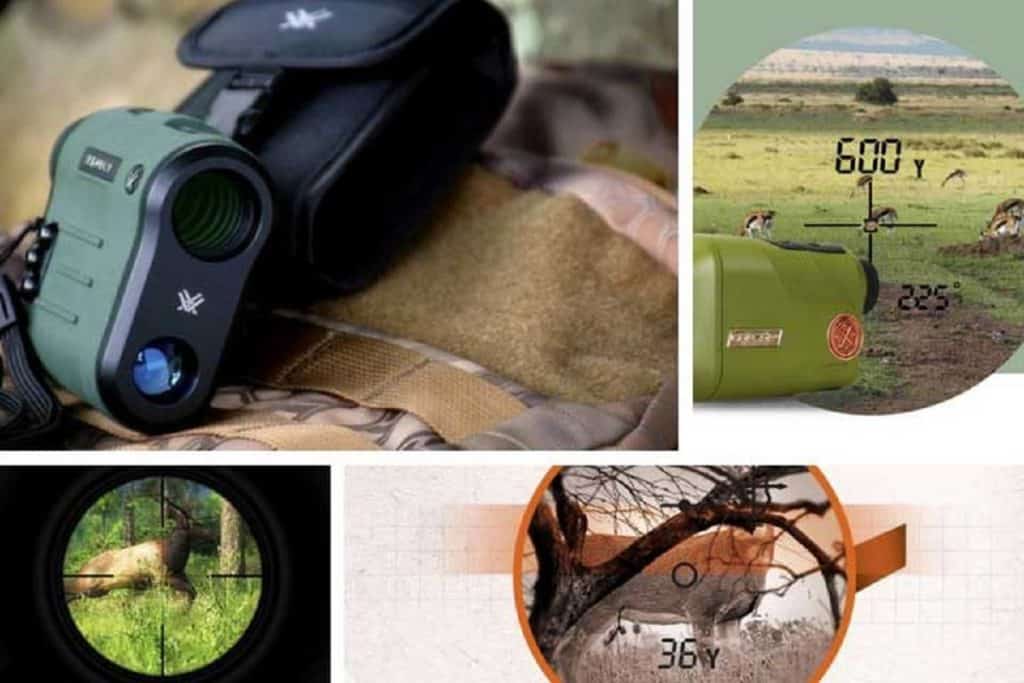
Frequently Asked Questions
How Does A Rangefinder Work?
Like throwing a ball at the wall and having it return, all rangefinders work using a similar concept. The user pushes a button, and laser beams hit the desired target and bounce back, providing an accurate distance reading based on the time it took the beams to return.
How Much Does A Rangefinder Cost?
Similar to other hunting optics, rangefinders vary significantly in price. The high-end rangefinder will run anywhere from $250-$700, while the cheaper, lower-end models cost $70-$250.
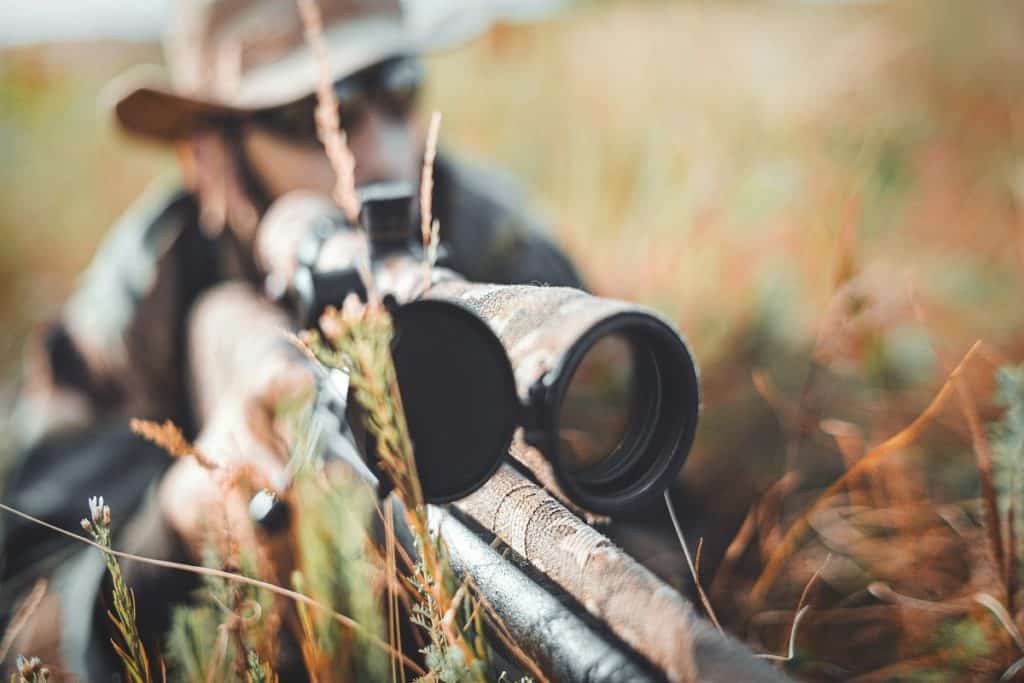
Who Makes The Best Rangefinder?
Vortex, Swarovski, Leica, Leupold, and Bushnell make a quality rangefinder. Remember, when it comes to optics, you get what you pay for (so spend what you can afford).
Final Words
Until Elon Musk installs microchips in our heads and we have bionic vision, having the ability to augment our sight by just pressing a single button on a very compact device is invaluable. A rangefinder is helpful not only to a seasoned hunter who is watching over his prey but also to a master golfer who is preparing for his next whole. Suffice it to say. Whatever you choose in the end, if you plan on engaging in either of these activities, a rangefinder is a must.

